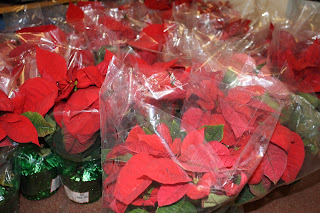Poinsettias by Kurt M. Jones Chaffee County Extension Director

The Aztecs cultivated the poinsettia in Mexico long before Europeans came to the Western Hemisphere. They used the bracts for a reddish-purple dye and the latex to counteract fever. The plant also played a part in midwinter celebrations and was widely planted in gardens. In 1925, Joel R. Poinsett, a botanist and the first U.S. Ambassador to Mexico, sent some plants to his home in South Carolina. He shared his find with other plant enthusiasts. December 12 th is National Poinsettia Day and recognizes Poinsett’s contribution to the holiday season. Poinsettias do well in the home and keep their color until mid-March. The showy red, pink, white, yellow, bicolored or speckled modified “leaves” are called bracts. With proper light and temperature, they accumulate the pigments that give them their color. The flowers of the poinsettia are in the center of the bracts. Poinsettias come in many colors and forms. New selections appear every year. When


